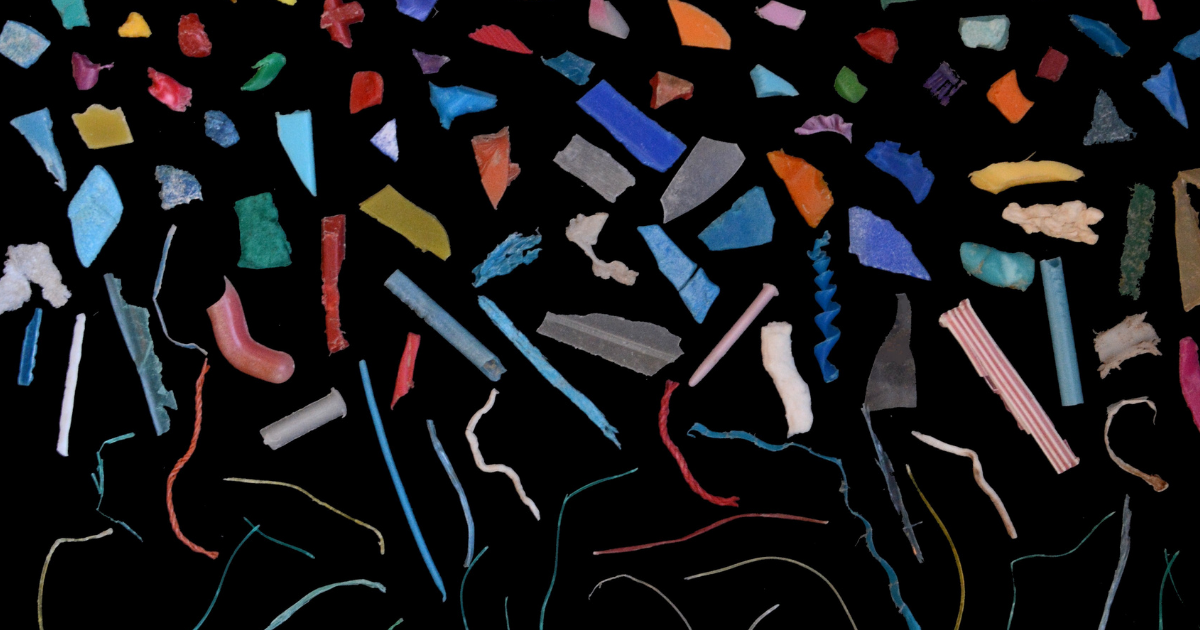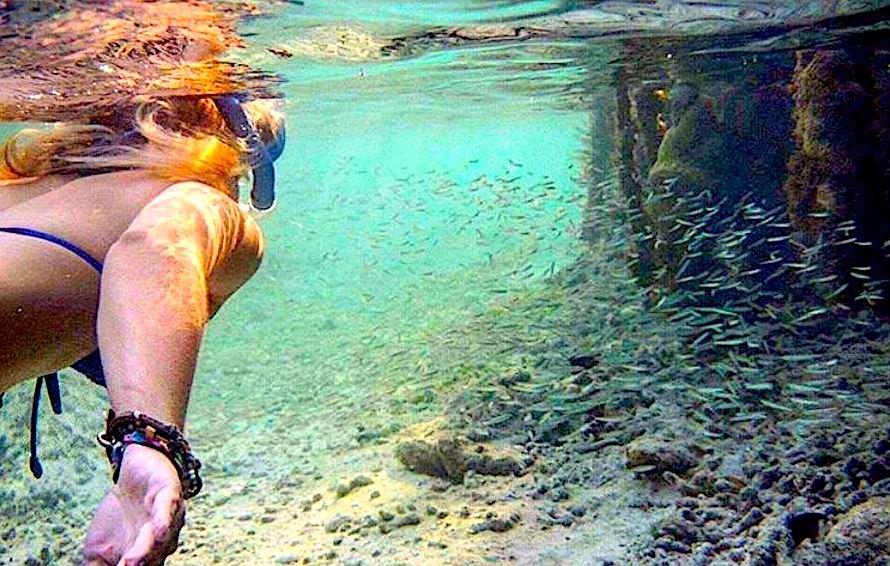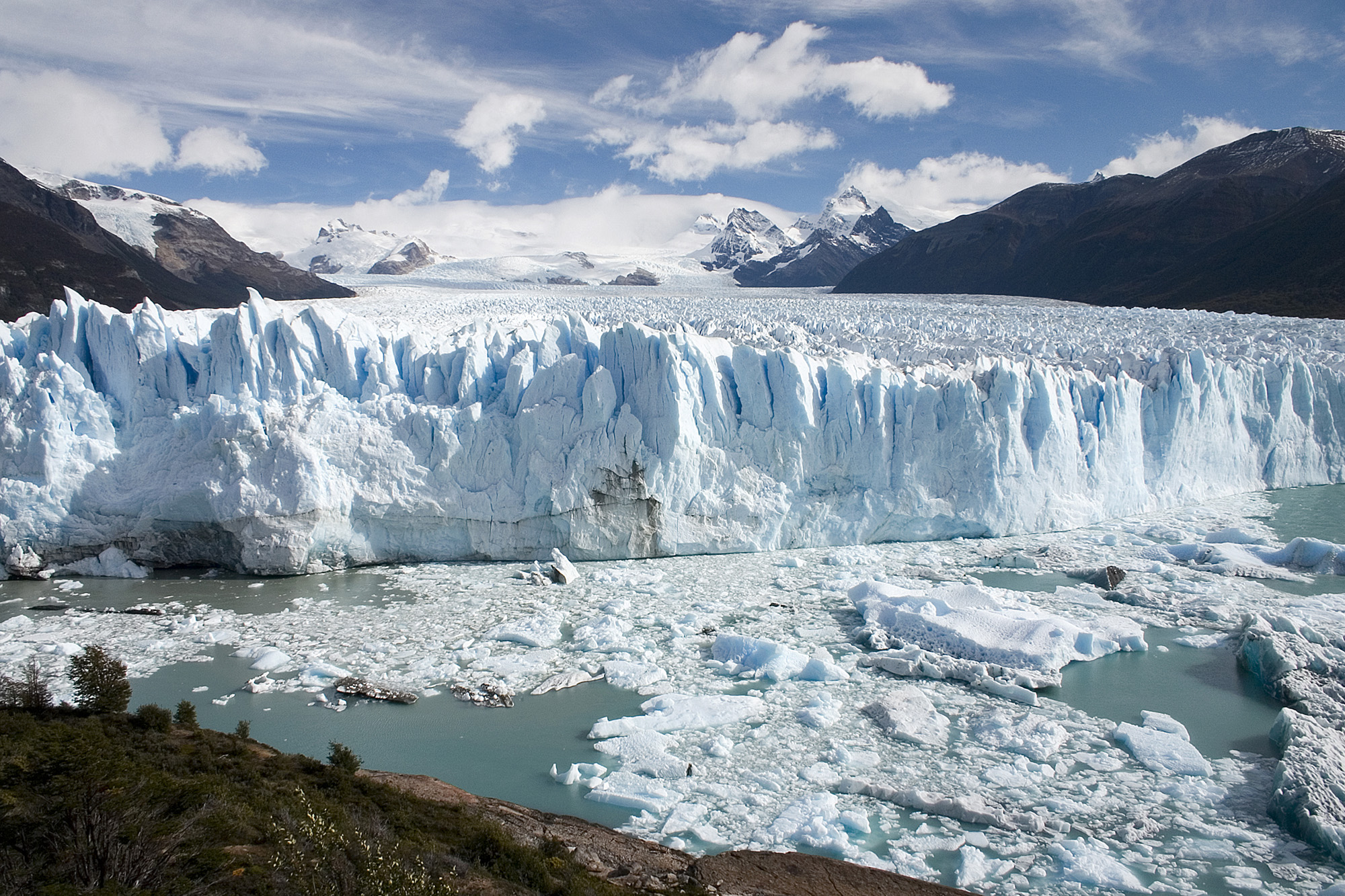Coastal Tidings
News, research, resources, and more.
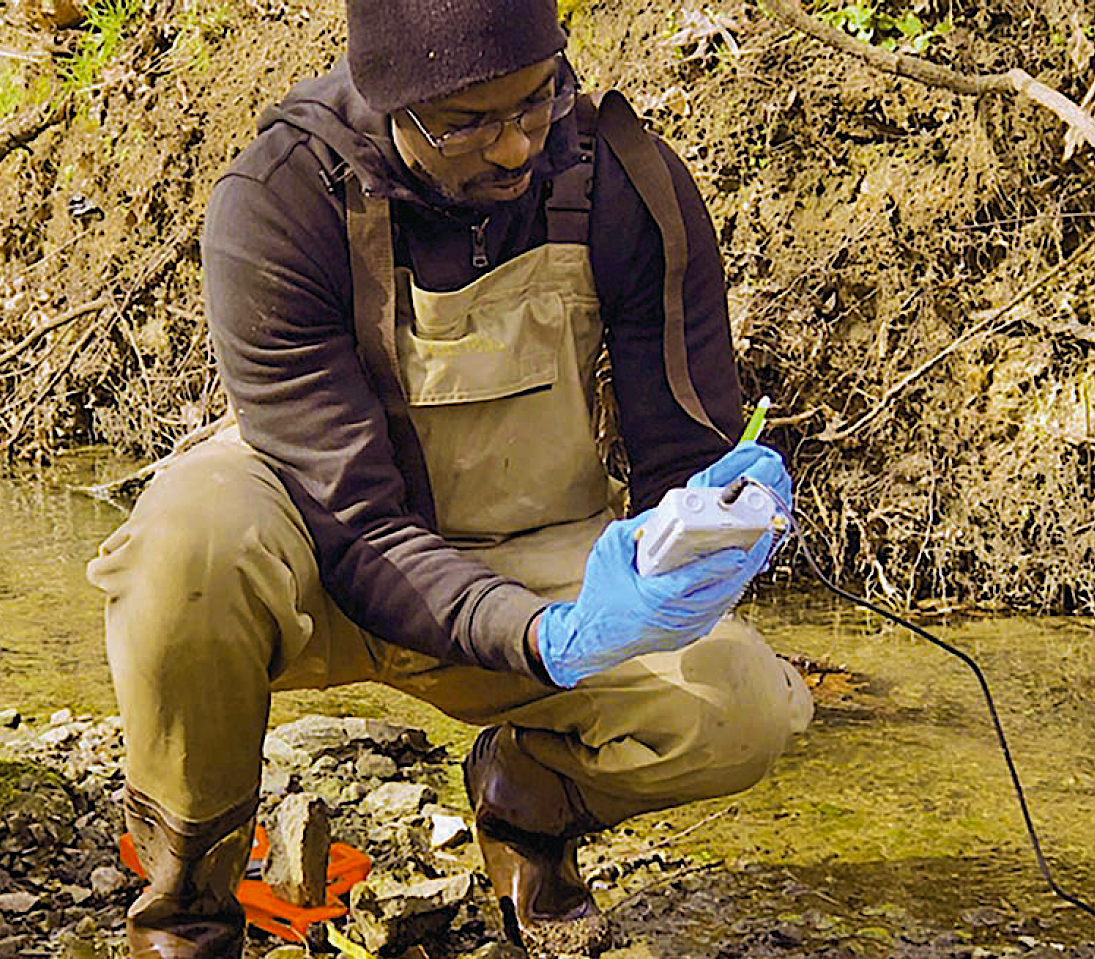
Study Reveals Antibiotics in Streams and Wells
Former joint North Carolina Sea Grant and N.C. Water Resources Research Institute Fellow Austin Gray and his colleagues have published results of research assessing the presence, quantity, and seasonality of antibiotics in the Piedmont of North Carolina, a region with a large farm animal population and high prevalence of private wells. Their study sampled 16 private wells and 16 streams across three counties in the fall, winter, and spring.
Gray’s team conducted targeted and non-targeted spectrometry to evaluate antibiotics. Analyses revealed the widespread occurrence of antibiotics in surface water, groundwater, and sediment. Veterinary antibiotics accounted for 33% of all antibiotics the team detected and occurred at the highest concentrations, highlighting the potential ecological and human health risks associated with animal husbandry.
Results also showed considerable seasonality in antibiotic concentrations. Surface water and sediment concentrations were highest in the fall, and groundwater concentrations were highest in the winter.
Gray received a joint North Carolina Sea Grant and the N.C. Water Resources Research Institute Graduate Student Research Fellowship to study antibiotic pollution, as well as subsequent North Carolina Sea Grant funding for related research.
Findings from his fellowship have resulted in invited presentations in the United States and abroad. He also has written for Coastwatch about his research.
full study
go.ncsu.edu/Austin-Gray
Austin Gray on his research
go.ncsu.edu/Gray-in-Coastwatch
Sea Grant funding opportunities
go.ncsu.edu/Sea-Grant-funding
— adapted from an article by Julia Guimond
Online Lesson Offers Watershed Wisdom
A new Watershed Wisdom lesson plan includes activities for elementary school students at home and in class. As schools move to alternate forms of instruction due to the spread of COVID-19, Watershed Wisdom is the latest of many educational resources available through North Carolina Sea Grant’s online portal for at-home learning.
Christy Perrin, sustainable waters and communities coordinator for North Carolina Sea Grant and the North Carolina Water Resources Research Institute, says that she and her colleagues wanted to support teachers by providing them with a free and easily accessible lesson plan on watersheds that meets required N.C. Essential Standards.

“We wanted to creatively engage students in learning about their local watersheds and empower students to take action,” says Perrin. “We created it to get students outdoors, teach them about their local watersheds, and prompt student-parent interaction with the concepts at home.”
North Carolina Sea Grant partnered for the project with UNC-TV, the North Carolina Watershed Stewardship Network’s K-12 team — which includes NC Project WET, WRRI, Town of Hillsborough, and City of Raleigh stormwater staff — and the Albemarle-Pamlico National Estuary Partnership. GSK also provided funding for the project.
Watershed Wisdom Lesson Plan
go.ncsu.edu/Watershed-Wisdom
Watershed Wisdom “Learning from Home Guide”
go.ncsu.edu/Home-Guide
Portal of Resources for At-Home Learning
go.ncsu.edu/Ed-Portal
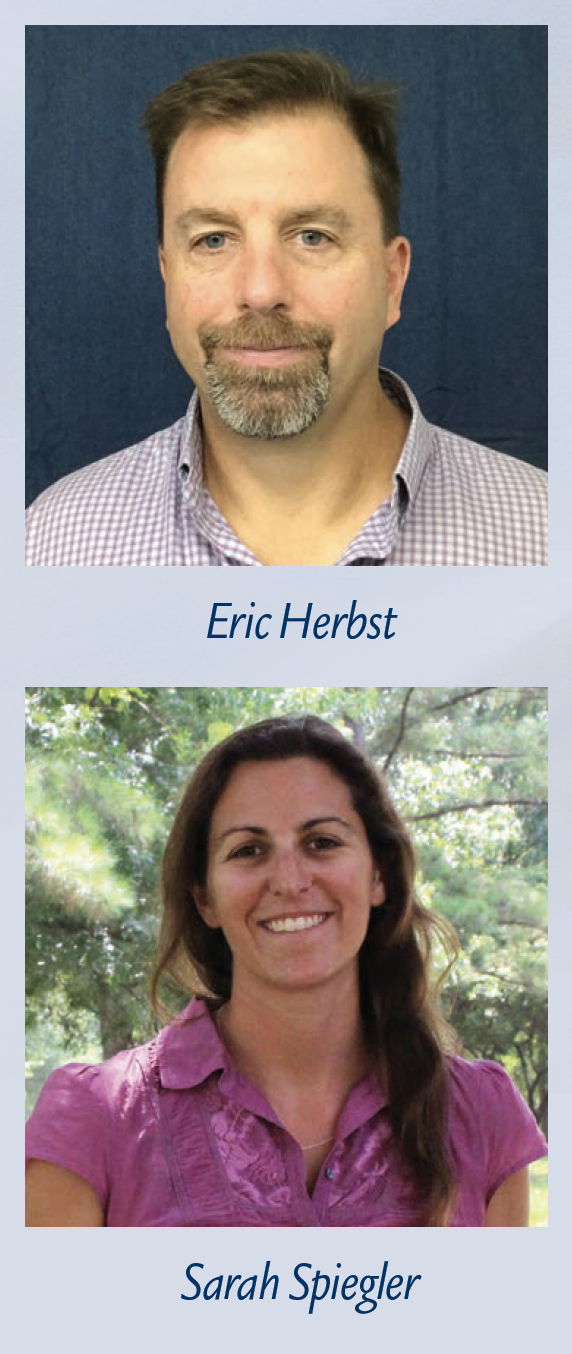
— Katelyn Vause
Sea Grant Adds Key Specialists
This summer, North Carolina Sea Grant brought aboard specialists to address urgent needs at the coast.
Eric Herbst joined the program in June, serving as coastal aquaculture specialist out of NC State University’s Center for Marine Sciences and Technology in Morehead City. Herbst supports the development, expansion, and diversification of the state’s coastal aquaculture industries, including shellfish, finfish, and algal species.
“I am very excited about returning to North Carolina and am honored to be joining the North Carolina Sea Grant team in support of the promotion of responsible and sustainable aquaculture,” Herbst says. “I look forward to working closely with growers and farmers, and the diverse group of aquaculture stakeholders and partners to develop solutions to challenges and help grow the state’s aquaculture industry.”
Frank López, North Carolina Sea Grant’s extension director, describes Herbst as a skilled and experienced scientist with excellent problem-solving skills. “He will bring a fresh perspective,” adds López.
Sarah Spiegler began her new responsibilities in August as coastal resilience specialist. Since 2018, she had served as the N.C. Sentinel Site Cooperative coordinator and marine education specialist for Sea Grant, after several years in prior roles with the cooperative.
“I am thrilled to continue working on pressing coastal issues, including adapting to climate change and increasing the resilience of North Carolina’s coastal communities and habitats,” Spiegler says.
Susan White, North Carolina Sea Grant’s executive director, says Spiegler’s previous roles brought productive partnerships and projects to the North Carolina coast.
“As global climate change fuels new challenges, especially along North Carolina’s coastlines, we’re fortunate to have Sarah’s expertise and experience,” says White. “Developing resilience in our coastal communities remains an urgent priority in our state and a cornerstone of our strategic planning.”
— Katelyn Vause & Dave Shaw
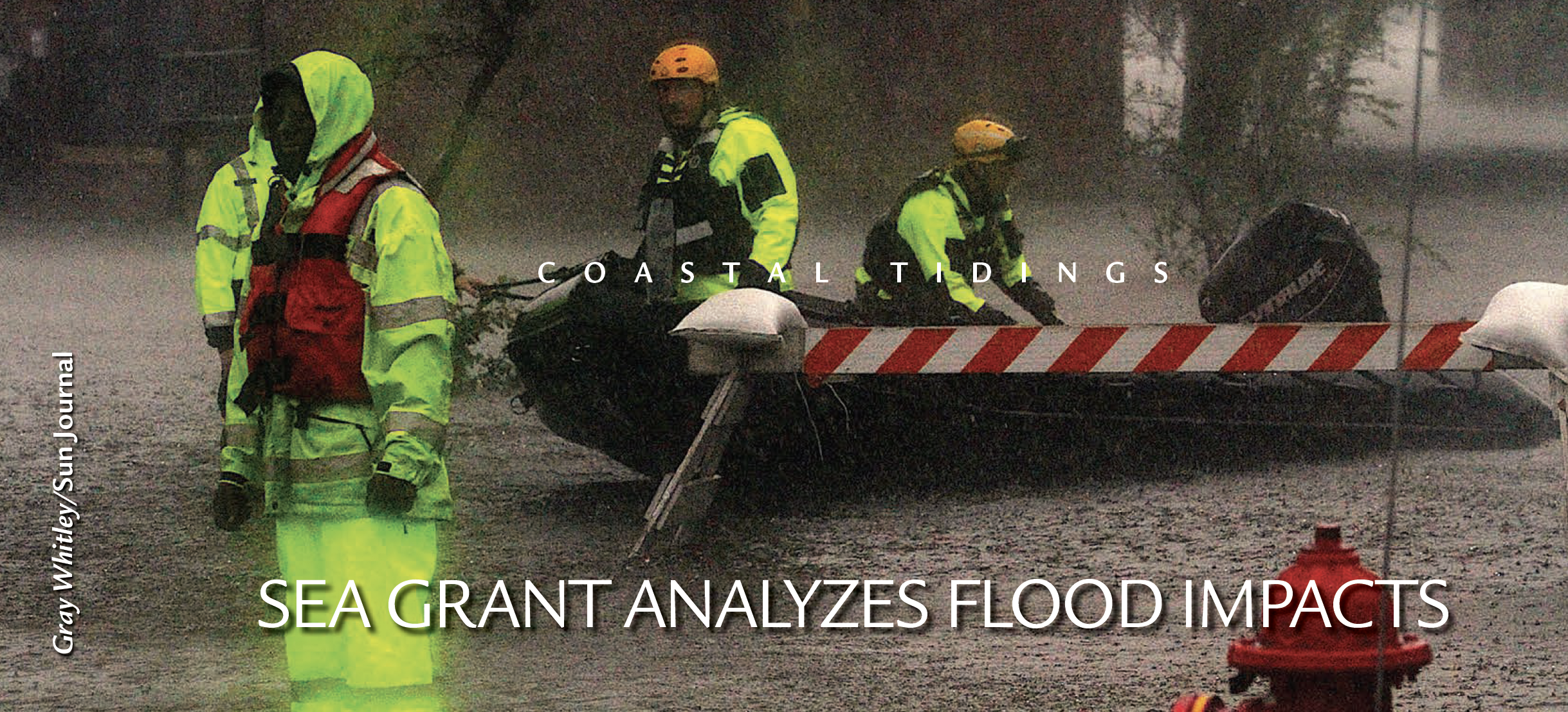
North Carolina coastal scientists and officials are key partners for a Sea Grant research project in which experts from four South Atlantic states are analyzing the impacts of flooding and the associated economic costs to coastal communities.
With funding from the Sea Grant programs and the National Oceanic and Atmospheric Administration Office for Coastal Management in the South Atlantic Region, the interdisciplinary research grant supporting the project honors the late Karl Havens, former director of Florida Sea Grant.
The N.C. team will include North Carolina Sea Grant, N.C. Department of Transportation, N.C. Division of Coastal Management, N.C. Division of Emergency Management, and the N.C. Coastal Reserve and National Estuarine Research Reserve.
“This project is especially interesting as it includes a broad range of data sources and also brings together coastal communities, state agencies, and our next generation of researchers to address real-world issues,” says Narcisa Pricope from the University of North Carolina Wilmington, the lead N.C. researcher.
“Working with collaborators at the City of New Bern and New Hanover County,” she explains, “we will develop community-relevant green infrastructure interventions — like natural land conservation and restoration of coastal wetlands, oyster reefs, and beach dunes — that may provide cost-effective flood-mitigation strategies within essential transportation networks throughout the coastal regions of our state.”
Read more
go.ncsu.edu/flood-costs
— Katie Mosher
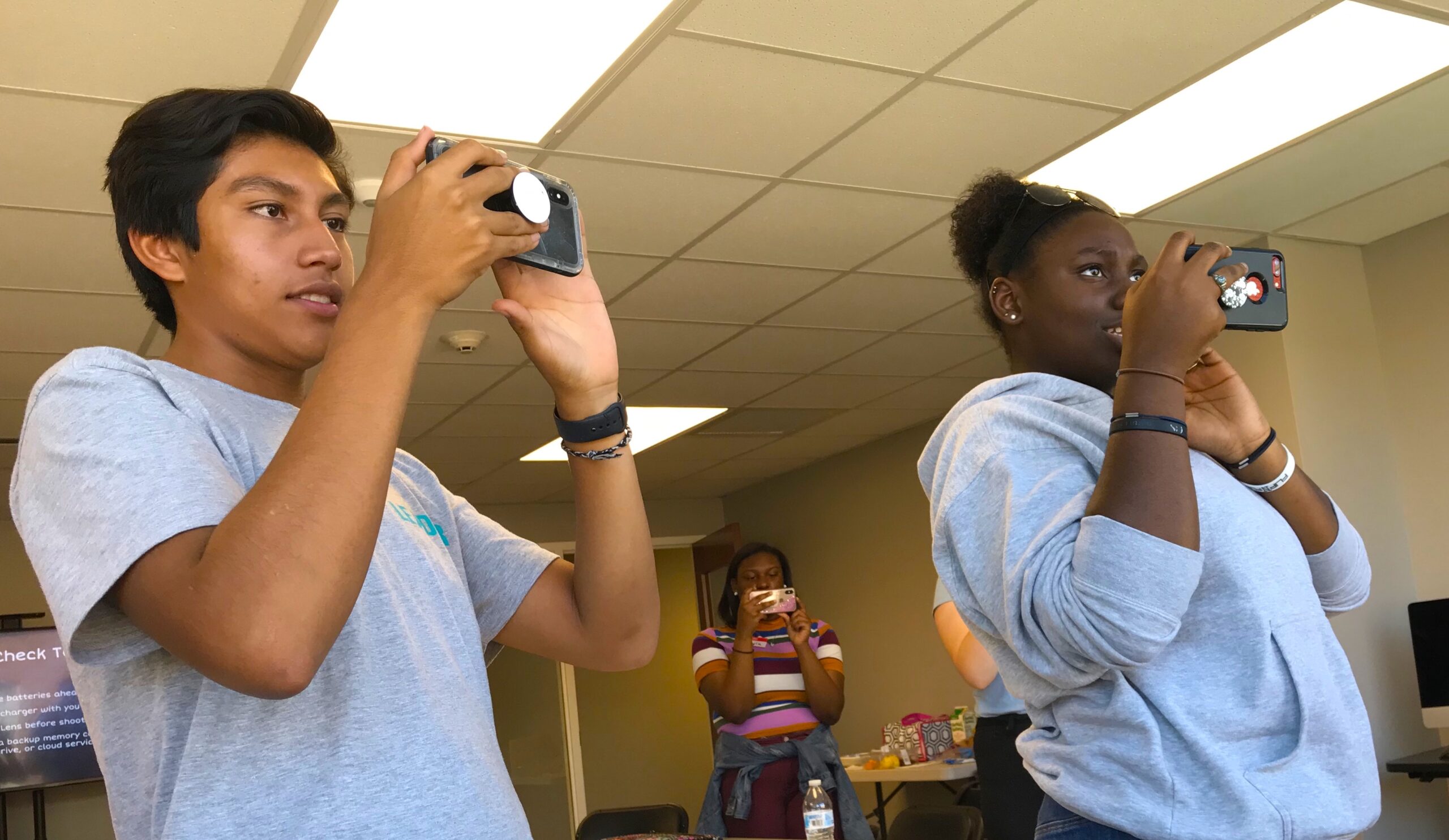
CCRG Program Launches New Projects
With support from the Community Collaborative Research Grant Program (CCRG), new projects on student leadership, the safety of shellfish harvests, and efficient shoreline restoration are underway.
“Each of these projects involves community partners to tackle important topics in our coastal region, with results that will include recommendations that can be used by other organizations and businesses,” says John Fear, deputy director for North Carolina Sea Grant.
Rose Hoban of North Carolina Health News and Nick Szuberla of Working Narratives/ Coastal Youth Media are building on prior leadership development initiatives to train students in coastal communities to consider coastal culture and history.
In addition, Joel Fodrie at the University of North Carolina at Chapel Hill, Stevenson Weeks of Crab Point Seafood, and two UNC-CH grad students are evaluating the environmental impacts of moving oysters from polluted habitats to cleaner waters.
Also, on Taylor’s Creek in Beaufort, Rachel Gittman at East Carolina University and Brandon Puckett of the N.C. Coastal Reserve and National Estuarine Research Reserve are partnering with David Cessna and Niels Lindquist of Sandbar Oyster Company to study whether restoring oyster reefs can alleviate the effects of boat wakes on marsh shoreline.
North Carolina Sea Grant administers the CCRG Program with the William R. Kenan Jr. Institute for Engineering, Technology, and Science (KIETS) and the N.C. Water Resources Research Institute.
“These projects will engage scientists, businesses, and community stakeholders, as well as young leaders, in thoughtful collaborations that will enable innovative solutions,” says Raj Narayan, associate director at KIETS.
The CCRG Program
go.ncsu.edu/CCRGprogram
— Katie Mosher
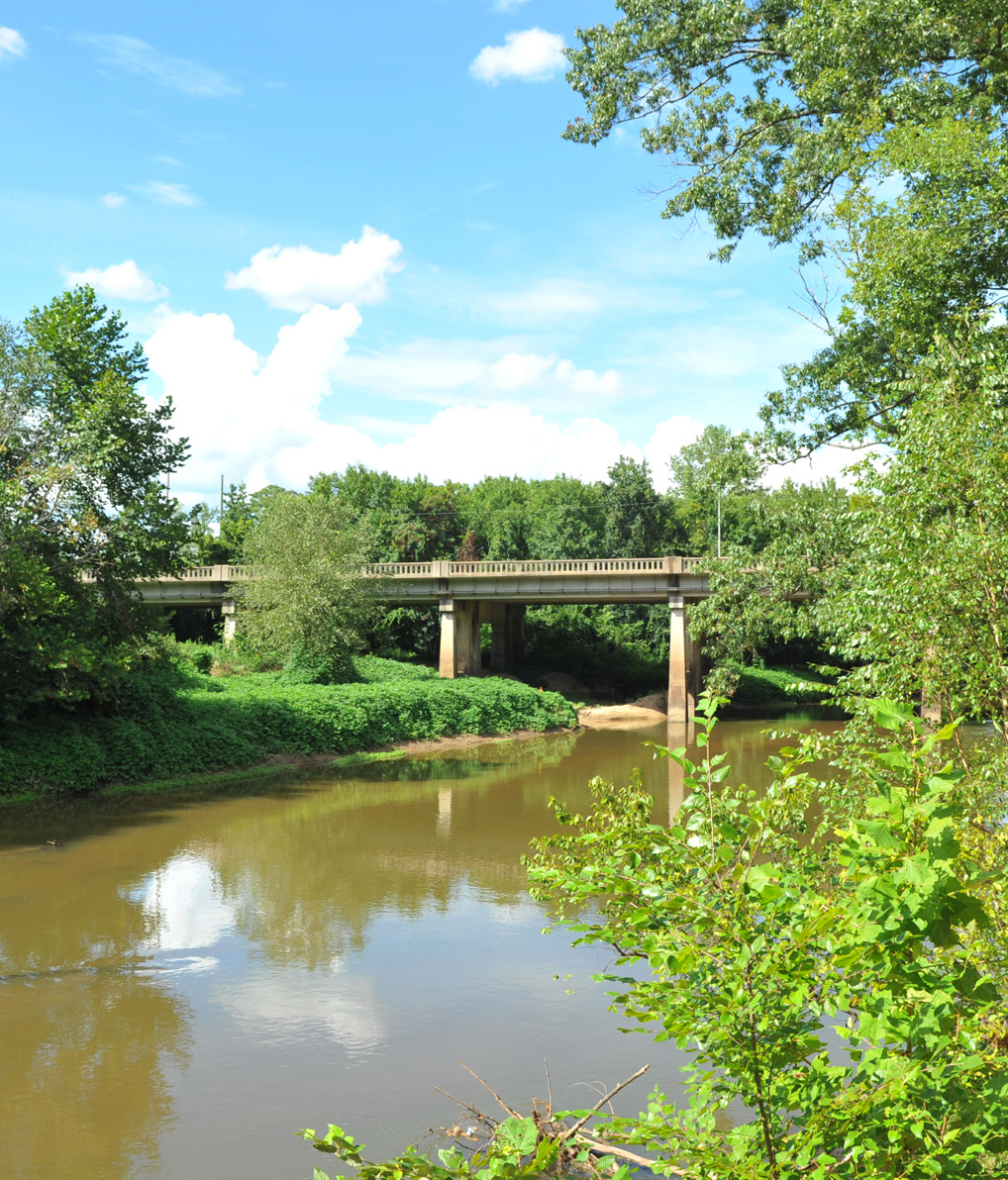
Flood Mitigation Resources Now Online
N.C. Coastal Rivers Flood Mitigation, North Carolina Sea Grant’s new online informational portal, offers strategies and resources for improving flood mitigation and transportation resilience in eastern N.C. communities.
As the global climate warms, North Carolinians likely can expect more severe inland flooding from more frequent, intense precipitation, according to the recent North Carolina Climate Science Report.
“The infrastructure of many small Coastal Plain communities won’t be able to handle the flooding that we’ll likely see with climate change,” says Barbara Doll, North Carolina Sea Grant’s water protection and restoration specialist and a faculty member in the Department of Biological and Agricultural Engineering at NC State University. “A big question is, how can they make cost-effective improvements?”
The N.C. Coastal Rivers Flood Mitigation portal builds on research from Doll and her team, as well as partners that include the N.C. Department of Transportation.
Reader-friendly content covers major floods in North Carolina, their impacts on transportation, and future flooding risks. Additional sections describe methods to improve resilience, offer online tools that communities can use for forecasting and planning, and provide case studies and links to relevant research.
“The idea is to provide science-based information to decision-makers who want to improve resilience in their communities but may not know where or how to start,” Doll says.
N.C. Coastal Rivers Flood Mitigation
go.ncsu.edu/flood-mitigation
— Julie Leibach
Seacoast Plants of the Carolinas and Lessons in Mariculture Win National Awards
Over the summer, Lessons in Mariculture and Seacoast Plants of the Carolinas each earned national recognition.
Lessons in Mariculture, 10 free resources for high school teachers, has won an APEX Award for Excellence in Campaigns, Programs & Plans – Education & Training. The lesson plans cover a variety of topics, such as aquaculture’s origins and production methods, and align with North Carolina science standards and Career and Technical Education programs.
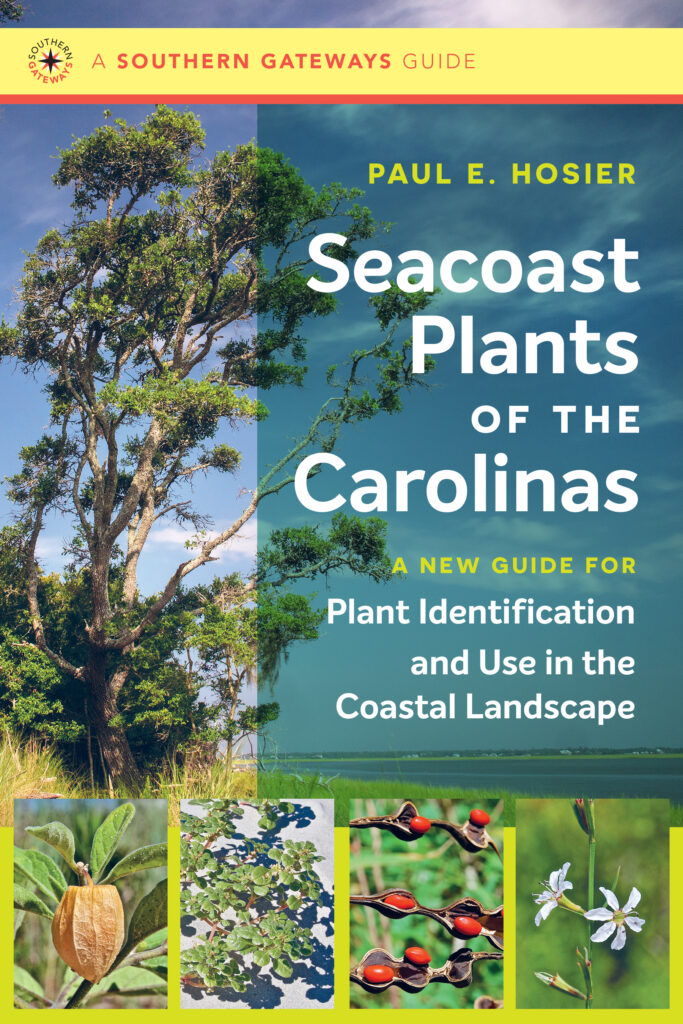
“We wanted to create easy-to-use resources that educators in science and agriculture could seamlessly integrate into their curriculum,” says North Carolina Sea Grant coastal economist Jane Harrison, who led the project.
Seacoast Plants of the Carolinas: A New Guide for Plant Identification and Use in the Coastal Landscape has earned two national awards. The American Library Association recognized Paul E. Hosier’s full-color authoritative guide as a 2019 Notable Government Document. Choice magazine also honored it as a 2019 Outstanding Academic Title.
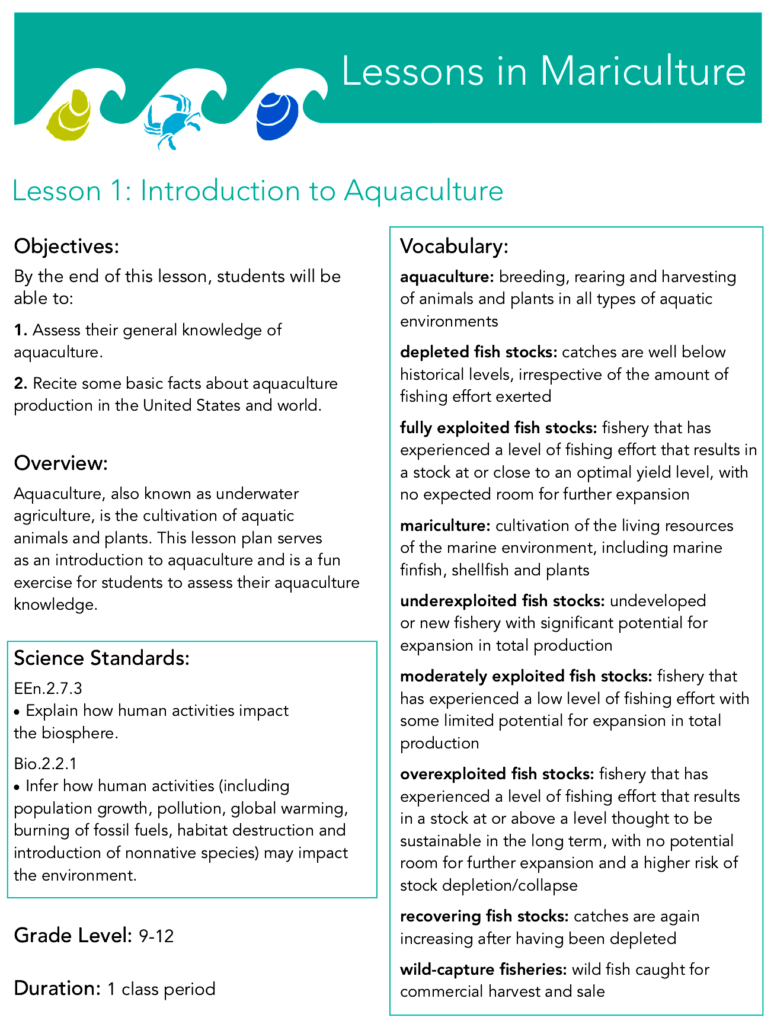
North Carolina Sea Grant published Seacoast Plants in partnership with the University of North Carolina Press. The guidebook features over 200 profiles of plants in the coastal zone of the Carolinas.
Lessons in Mariculture
go.ncsu.edu/MaricultureLessons
Seacoast Plants of the Carolinas
go.ncsu.edu/SeacoastPlants
— Julie Leibach & Katie Mosher
First STEM Policy Fellows Serve NC
North Carolina’s inaugural STEM Policy Fellows began yearlong assignments in August in two high-level state government offices.
“This new fellowship — focusing on science, technology, engineering, and mathematics — provides unique, in-state, non-academic career opportunities for recent graduate students,” says Susan White, North Carolina Sea Grant’s executive director. “It is clear from the outstanding applications we received that there is a desire among multi-talented graduate students to help our state consider key policy challenges.”
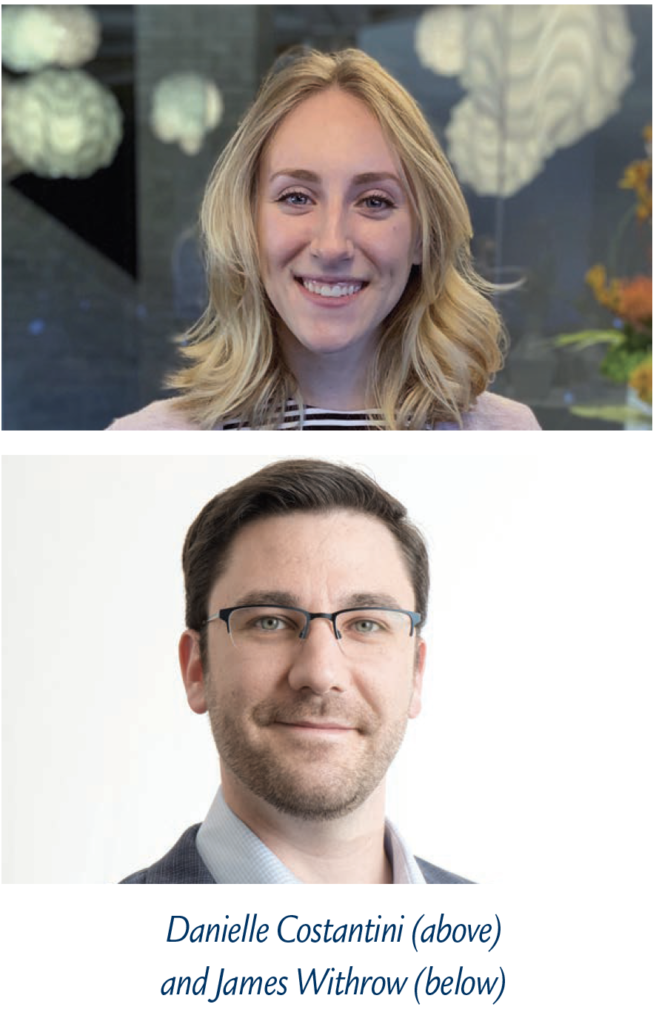
James Withrow, a doctoral candidate at NC State University, serves at the N.C. Department of Commerce’s Office of Science, Technology, and Innovation. Danielle Costantini, who recently completed her master’s at NC State, is working in the N.C. Department of Environmental Quality’s State Energy Office.
The prestigious STEM Policy Fellowship also includes professional development sessions in science policy, in partnership with Sigma Xi. North Carolina Sea Grant administers the fellowship.
Russ Campbell with the Burroughs Wellcome Fund, which provided a generous matching grant for the fellowship, says the program is a hit even amidst the global pandemic.
“Despite the challenges of COVID-19 restrictions,” Campbell says, “this pilot year already has shown great success, including strong host offices, outstanding applicants, and the professional development to help fellows bridge the science and policy arenas.”
more about the STEM Policy Fellows
go.ncsu.edu/STEM-Fellows
— Katie Mosher
NC Students Earn Top Fellowships
North Carolina continues to supply prestigious fellowships with talented graduate students. In addition to the inaugural North Carolina STEM Policy Fellowships, several programs are providing recent winners with seminal opportunities for early career development.
North Carolina Sea Grant and North Carolina Space Grant selected Shannon Ricci, a Ph.D. student at NC State University, for their joint fellowship program. The fellowship supports interdisciplinary approaches that address research needs for nearshore environments, coastal areas, and coastal watersheds.

Ricci will use remotesensing technology and satellite images to study how frequently boats visit sites that the N.C. Division of Marine Fisheries (DMF) maintains through its artificial reef program.
“Rapid advances in technology — including widening access to satellite and remote-sensing data — are opening new avenues to study our state’s coastal region,” says John Fear, deputy director of North Carolina Sea Grant. “Such novel research approaches ultimately will benefit the state’s ecology and economy.”
B Stevens holds the N.C. Marine Fisheries Fellowship, which includes North Carolina Sea Grant as partner. Stevens holds a masters in coastal environmental management from Duke University and serves at DMF and NC State’s Center for Marine Sciences and Technology.
“This program helps develop future leaders by giving scientists early-on, real-world experience considering complex questions,” says Susan White, North Carolina Sea Grant’s executive director. “In turn, they bring to the agency new tools for fisheries management, including data analysis methods and visualizations.”
Matthew Damiano, a doctoral student at NC State, received a NOAA Fisheries-Sea Grant Joint Fellowship, which supports students pursuing degrees in population and ecosystem dynamics and in marine resource economics. Damiano will develop a stock assessment and management strategy evaluation tool for common dolphinfish.
“While dolphinfish is popular on restaurant menus, often under the name mahi mahi, the species’ stock status and fishing mortality rate are not well identified,” Fear says.
Another national program, NOAA’s Coastal Management and Digital Coast Fellowship, offers on-the-job training for postgraduate students in coastal resource management and policy.
Anna Jane Jones, among this year’s select group, earned her master’s in city and regional planning from the University of North Carolina at Chapel Hill and will work with The Nature Conservancy to plan and implement nature-based solutions to reduce risk.
“We are extremely thrilled that Anna Jane will bring her planning skills to The Nature Conservancy in support of their risk reduction and recovery efforts,” Fear says. In addition, four new finalists for the John A. Knauss Marine Policy Fellowship from our state are about to learn in which federal offices they will serve. You can read their stories in the next issue.
Sea Grant fellowships
go.ncsu.edu/fellowships
— Lee Cannon, Katie Mosher, and Dave Shaw
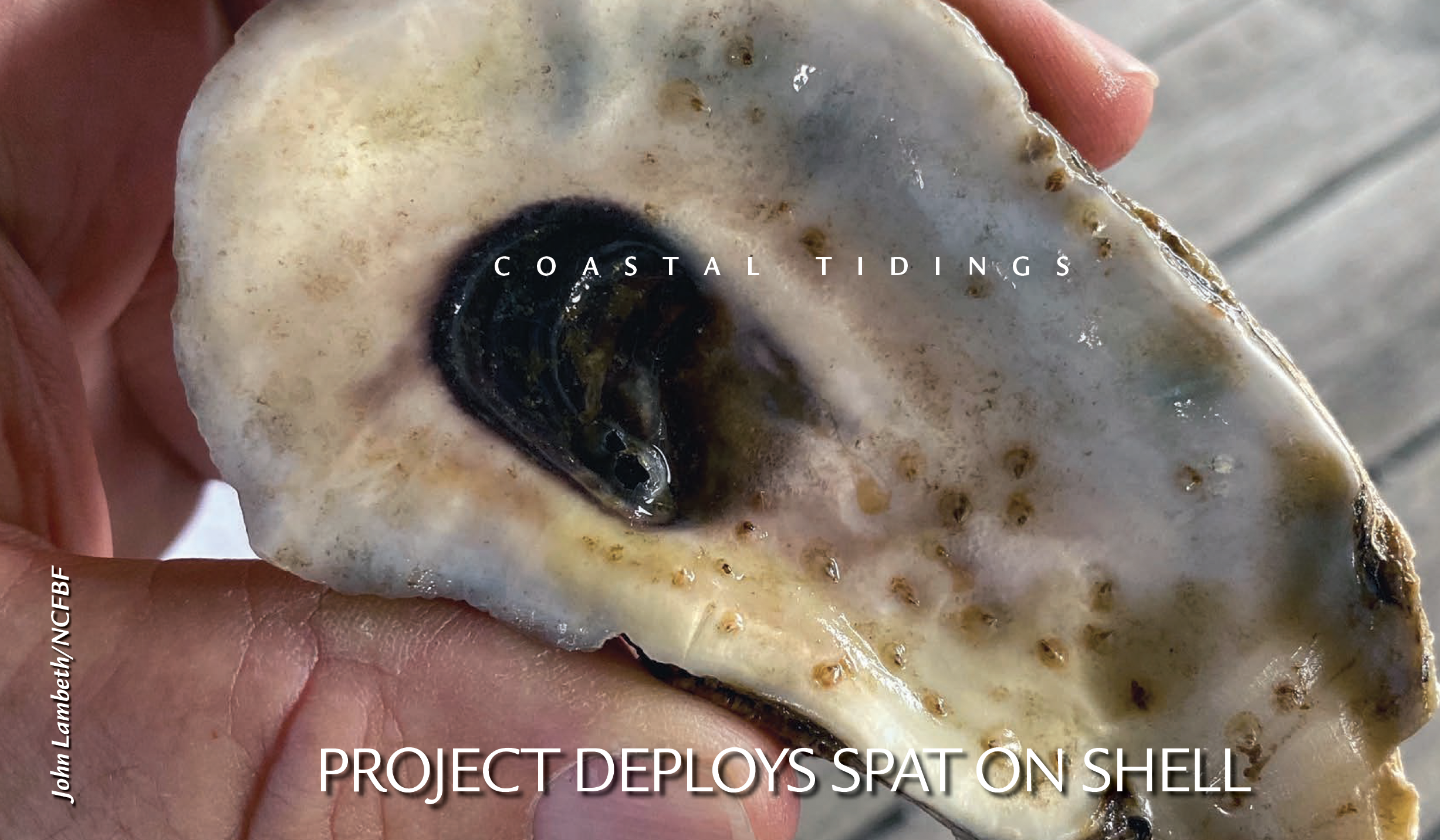
North Carolina Sea Grant, the North Carolina Farm Bureau Federation, N.C. Division of Marine Fisheries, and industry collaborators have joined forces to produce “spat on shell” in order to restore wild oyster populations for future harvest.
Frank López, extension director for North Carolina Sea Grant, says the project will bring economic and environmental benefits.
“Recent storms like Hurricane Florence have impacted wild oyster populations,” he explains. “Spat-on-shell culturing allows oysters to be started as larvae in a nursery setting. As the larvae permanently attach to oyster shell in climate-controlled tanks, they are known as ‘spat.’ The spat-on-shell then can be deployed in sounds. The spat grow into adult oysters in this natural setting — and can form dense oyster beds over time.”
This summer the project completed deployments in Jarrett Bay off the Core Sound and a site in North River, with another scheduled for Newport River in the spring.
Support from the North Carolina Commercial Fishing Resource Fund was invaluable, López says, and he credits Debbie Hamrick, director of specialty crops for the N.C. Farm Bureau Federation and an advisory board member for Sea Grant, with helping to initiate the project.
“Oysters are an important fishery for North Carolina’s working watermen,” says Hamrick. “During winter months, wildharvested oysters provide needed income to support coastal fishing families, while providing tasty, healthy local food to seafood markets.”
more on “Spat on Shell”
go.ncsu.edu/spat-on-shell
— Katie Mosher & Dave Shaw
